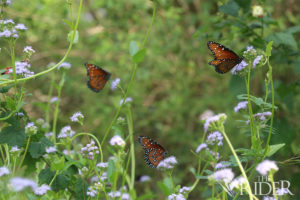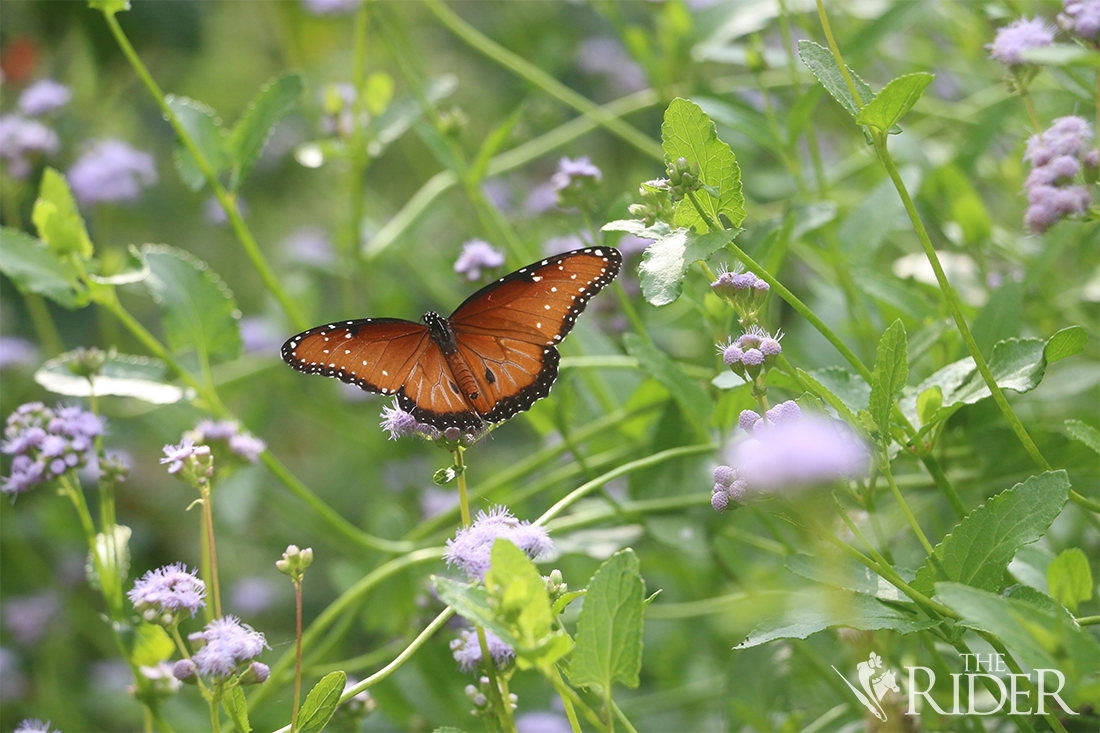Every fall, Monarch butterflies travel thousands of miles from the northern United States to Mexico but, according to a university professor, they are endangered due to the disappearance of food and land being used agriculturally.
“They have migrations, right, where they cluster together and they all travel,” said biology Assistant Professor Julie Mustard. “But it takes over several weeks where we would be seeing large numbers of Monarchs coming through the Rio Grande Valley. But the main actual migration is a little bit to the west of us. So, in Edinburg they would see the edge of that migration, and here in Brownsville, we only see a few. We don’t see this huge migration of butterflies and it depends, again, on climate.”
The Monarchs migrate due to not being able to withstand freezing weather in the northern continental climates in the winter.
Mustard said milkweed is essential to the Monarch butterflies, and the UTRGV Biology Department and the School of Earth, Environmental and Marine Sciences have provided a spot on the Brownsville campus for Monarch butterflies and other pollinators.
The Pollinator Cantina was established in Spring 2018 and is located between the Life and Health Sciences Building and the Lozano-Banco Resaca in Brownsville.
“We have planted a number of native flowers that support our native butterflies and our native bees,” Mustard said. “That would include the Monarch; specifically, their caterpillars grow on milkweed. So, planting milkweed, especially tropical milkweed, is native to the area [and] would support Monarchs specifically. Other butterflies can also collect the nectar from the milkweeds as well.”
The Pollinator Cantina will expand in Spring 2020 due to a $3,000 grant from the U.S. Agriculture Department.

“There’s a significant decrease both in Monarch butterflies and also in other types of pollinators,” Mustard said. “So, different species of butterflies and also our native bees, which people don’t really talk about, but they are really important. They are good
for agriculture.”
Javier Gonzalez, a naturalist educator at the South Padre Island Birding and Nature Center, said the Monarch butterflies have closely related cousins called Queens and Soldiers.
Gonzalez said the way people can distinguish the two is that Monarch butterflies are bigger in size and are bright orange with gold spots on their forewings. Queens are smaller and darker brown.
Monarch butterflies are important to the ecosystem, according to Gonzalez.
“They’re very important to the ecosystem as pollinators,” he said. “Pollinators are incredibly important … There’s really no food for anyone, anybody. Most of our food that we get is because of pollinators, pollinating plants and to make fruit, vegetables, you name it. And also, food for wildlife. So, pollinators are extremely important, and Monarchs aren’t the best pollinators, but they are one. … The world wouldn’t be the same without the beautiful things in it, you know. That’s the best part of life and makes life beautiful.”






